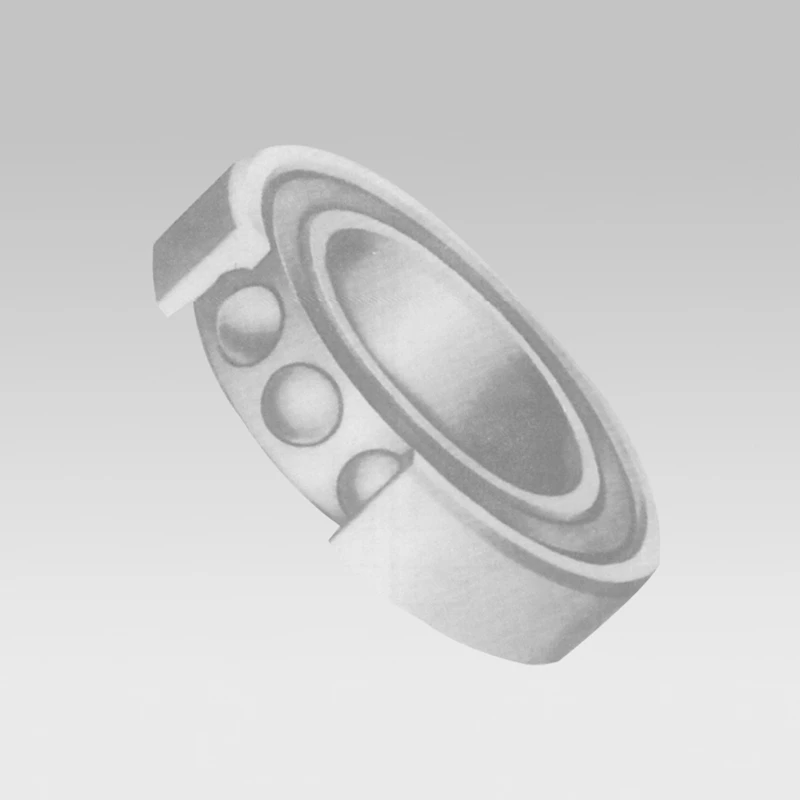
Nov . 07, 2024 14:00 Back to list
Compact Thrust Ball Bearing for Precision Applications and Enhanced Performance
Understanding Miniature Thrust Ball Bearings An Essential Component in Precision Engineering
Miniature thrust ball bearings play a critical role in the world of mechanical engineering and precision applications. These specialized bearings are designed to handle axial loads—forces that act parallel to the axis of rotation—making them essential for various machines and devices where space is limited but precision and reliability are paramount. In this article, we'll explore the design, function, benefits, applications, and maintenance of miniature thrust ball bearings.
Design and Structure
Miniature thrust ball bearings typically comprise three main components the outer race, the inner race, and the balls. The outer and inner races act as channels for the balls, providing a smooth surface for rotation. The balls themselves are responsible for minimizing friction between the races, facilitating the transfer of axial loads. The size of these bearings can be incredibly small, with diameters often measured in millimeters, making them particularly useful for applications requiring compact dimensions without compromising performance.
These bearings are often made from high-quality materials such as stainless steel, chrome steel, or ceramic, which enhance durability and resistance to wear over time. The use of different materials can also influence the bearing's performance under various environmental conditions, such as exposure to moisture, temperature fluctuations, and corrosive substances.
Functionality
The primary function of miniature thrust ball bearings is to support axial loads, which are forces that push or pull along the axis of the bearing. Unlike radial bearings that support loads perpendicular to the axis, thrust ball bearings are uniquely designed to manage forces that occur along the rotational axis. This makes them indispensable in applications where precise control of movement is necessary, such as in the adjustment mechanisms of sensitive instruments or in high-speed motors.
When installed properly, thrust ball bearings allow for smooth rotation while minimizing resistance and heat generation. This efficiency translates to lower energy consumption and enhances the overall performance of the equipment in which they are used.
Advantages of Miniature Thrust Ball Bearings
1. Compact Design Their small size makes them suitable for use in applications where space is at a premium, such as in electronics, robotics, and precision machinery. 2. High Load Capacity Despite their miniature size, these bearings can handle significant axial loads, enabling their use in demanding applications without sacrificing performance.
miniature thrust ball bearing

3. Reduced Friction The design of thrust ball bearings minimizes friction, enhancing efficiency and prolonging the lifespan of the mechanical components they support.
Applications
Miniature thrust ball bearings find widespread use across a myriad of applications
- Robotics In robotic arms, these bearings provide precise control and movement, allowing for intricate tasks in manufacturing and assembly lines. - Medical Devices Instruments such as surgical tools and diagnostic equipment utilize miniature thrust ball bearings to ensure accuracy and reliability during operations.
- Consumer Electronics Devices like computer hard drives, cameras, and gaming consoles often rely on these bearings to facilitate smooth functionality and prolong operational life.
- Aerospace In the aviation industry, reliability is paramount; miniature thrust ball bearings support various components such as landing gears and actuators, ensuring safe operations.
Maintenance and Care
To ensure the longevity and optimal performance of miniature thrust ball bearings, regular maintenance is crucial. This includes periodic inspection for wear and tear, cleaning to remove debris and contaminants, and, when appropriate, the application of lubricants. Proper lubrication reduces friction and prevents overheating, which can lead to significant failure in high-demand applications.
In conclusion, miniature thrust ball bearings are essential components of many modern technologies, enabling efficient and precise movement in countless applications. Their compact design, high load capacity, and versatility make them a preferred choice in precision engineering. As industries continue to innovate and demand more from machinery and devices, understanding and utilizing these bearings will be ever more critical.
Latest news
-
Premium Deep Groove Ball Bearings | High Speed & Reliability
NewsAug.29,2025
-
Durable Scaffolding Clamps - Secure & Reliable Tube Connectors
NewsAug.28,2025
-
Common Failures in Thrust Ball Bearings and Solutions
NewsAug.22,2025
-
How Tapered Roller Bearings Can Take Shock Loads
NewsAug.22,2025
-
Angular Bearings in High-Precision Spindles
NewsAug.22,2025
-
The Impact of Misalignment on Cylindrical Roller Bearing Performance
NewsAug.22,2025
